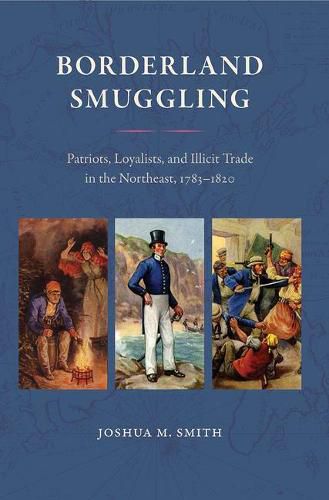Readings Newsletter
Become a Readings Member to make your shopping experience even easier.
Sign in or sign up for free!
You’re not far away from qualifying for FREE standard shipping within Australia
You’ve qualified for FREE standard shipping within Australia
The cart is loading…






This title is printed to order. This book may have been self-published. If so, we cannot guarantee the quality of the content. In the main most books will have gone through the editing process however some may not. We therefore suggest that you be aware of this before ordering this book. If in doubt check either the author or publisher’s details as we are unable to accept any returns unless they are faulty. Please contact us if you have any questions.
North American Society for Oceanic History John Lyman Book Award in United States Maritime History
Passamaquoddy Bay lies between Maine and New Brunswick at the mouth of the St. Croix River. Most of it (including Campobello Island) is within Canada, but the Maine town of Lubec lies at the bay’s entrance. Rich in beaver pelts, fish, and timber, the area was a famous smuggling center after the American Revolution. Joshua Smith examines the reasons for smuggling in this area and how three conflicts in early republic history the 1809 Flour War, the War of 1812, and the 1820 Plaster War reveal smuggling’s relationship to crime, borderlands, and the transition from mercantilism to capitalism.
Smith astutely interprets smuggling as created and provoked by government efforts to maintain and regulate borders. In 1793 British and American negotiators framed a vague new boundary meant to demarcate the lingering British empire in North America (Canada) from the new American Republic. Officials insisted that an abstract line now divided local peoples on either side of Passamaquoddy Bay. Merely by persisting in trade across the newly demarcated national boundary, people violated the new laws. As smugglers, they defied both the British and American efforts to restrict and regulate commerce. Consequently, local resistance and national authorities engaged in a continuous battle for four decades.
Smith treats the Passamaquoddy Bay smuggling as more than a local episode of antiquarian interest. Indeed, he crafts a local case study to illuminate a widespread phenomenon in early modern Europe and the Americas.
A volume in the series New Perspectives on Maritime History and Nautical Archaeology, edited by James C. Bradford and Gene Allen Smith
$9.00 standard shipping within Australia
FREE standard shipping within Australia for orders over $100.00
Express & International shipping calculated at checkout
This title is printed to order. This book may have been self-published. If so, we cannot guarantee the quality of the content. In the main most books will have gone through the editing process however some may not. We therefore suggest that you be aware of this before ordering this book. If in doubt check either the author or publisher’s details as we are unable to accept any returns unless they are faulty. Please contact us if you have any questions.
North American Society for Oceanic History John Lyman Book Award in United States Maritime History
Passamaquoddy Bay lies between Maine and New Brunswick at the mouth of the St. Croix River. Most of it (including Campobello Island) is within Canada, but the Maine town of Lubec lies at the bay’s entrance. Rich in beaver pelts, fish, and timber, the area was a famous smuggling center after the American Revolution. Joshua Smith examines the reasons for smuggling in this area and how three conflicts in early republic history the 1809 Flour War, the War of 1812, and the 1820 Plaster War reveal smuggling’s relationship to crime, borderlands, and the transition from mercantilism to capitalism.
Smith astutely interprets smuggling as created and provoked by government efforts to maintain and regulate borders. In 1793 British and American negotiators framed a vague new boundary meant to demarcate the lingering British empire in North America (Canada) from the new American Republic. Officials insisted that an abstract line now divided local peoples on either side of Passamaquoddy Bay. Merely by persisting in trade across the newly demarcated national boundary, people violated the new laws. As smugglers, they defied both the British and American efforts to restrict and regulate commerce. Consequently, local resistance and national authorities engaged in a continuous battle for four decades.
Smith treats the Passamaquoddy Bay smuggling as more than a local episode of antiquarian interest. Indeed, he crafts a local case study to illuminate a widespread phenomenon in early modern Europe and the Americas.
A volume in the series New Perspectives on Maritime History and Nautical Archaeology, edited by James C. Bradford and Gene Allen Smith